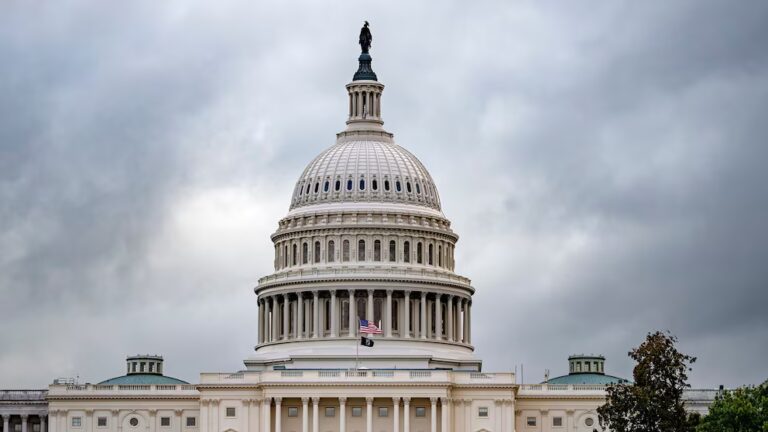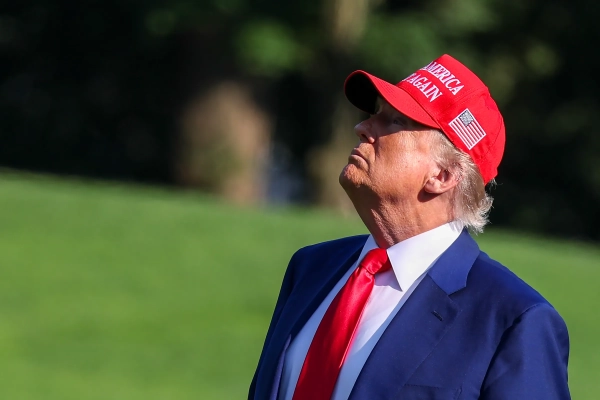
As its name suggests, Democrats’ new budget reconciliation bill — the Inflation Reduction Act — claims it will help bring down inflation.
The legislation is a landmark bill that makes massive investments in climate, tax, and health care policy, and contains multiple provisions that could help achieve that goal. For one, the Congressional Budget Office has found that it’s likely to reduce the deficit by up to $102 billion over 10 years (and perhaps more than $300 billion, depending on the proposal’s final taxation rules). Deficit reduction, as well as other policies in the bill, could curb demand in the economy. Additionally, the bill would increase the supply of resources like energy. As the thinking goes, when supply is up and demand is down, prices decline.
The bill’s net impact on inflation, though, is likely modest, and may not be felt for a while given how long many of these policies will take to go into effect, multiple economists who spoke with Vox said.
“We’re talking about small impacts one way or the other, not likely to have any significant change in what consumers are feeling overnight,” Shai Akabas, director of economic policy at the Bipartisan Policy Center, told Vox.
Akabas and the other experts Vox spoke with believe the legislation’s anti-inflationary effects are probably larger than a recent study from the University of Pennsylvania’s Wharton School of Business claims. That study expressed “low confidence that the legislation will have any impact on inflation.”
Vox spoke with three economists who explained why they think that analysis is mistaken, and how Americans should think about the bill below. Their answers were edited for length and clarity.
Would the Inflation Reduction Act actually reduce inflation?
Marc Goldwein, senior policy director for the Committee for a Responsible Federal Budget: The Inflation Reduction Act is going to help the Federal Reserve to reduce inflation. It’s not like it’s going to cut the inflation rate from 9 percent to 2 percent.
Very little [effect will be felt] in the next six months. For the most part, this isn’t a bill about 2022. This is about 2023, 2024, 2025. It’s about helping the Federal Reserve to fight against persistent inflation. It’s not gonna be bringing down the inflation rate in the month of September.
Shai Akabas, director of economic policy at the Bipartisan Policy Center: I think it’s likely to have a modest downward effect on inflation, so directionally, I think it is likely to push downward on prices. But that’s unlikely to be the primary effect of the legislation, given how many specific policies there are.
Most of the impact on inflation and the broader economy from this legislation is likely to be medium-term, not felt in the immediate next few months, which is how households are thinking about inflation.
That’s largely because there’s very little that policymakers can do, certainly on a legislative basis, to impact inflation overnight. That is primarily the job of the Federal Reserve. … There’s not much you can do, absent overnight taking lots of money out of the economy, out of people’s pockets — which is not something that Congress likes to do or almost ever does — that is going to dramatically change the immediate inflation outlook.
There are lots of other purposes that the legislation is seeking to achieve. It is not primarily, notwithstanding the name, focused on measures that would tamp down inflation. But I do think that it is likely to have a modest effect, a downward effect, on inflation as a whole.
Rakeen Mabud, chief economist of the Groundwork Collaborative: The first thing to say is that big public investments, like those contained in this bill, are good for the economy, full stop. So I think the real sort of standout here in the short term is bringing down health care costs. Health care costs are important because they put a massive strain on family budgets. Starting to bring those costs down will significantly ease people’s ability to live a good life and ability to participate in the economy.
But I also want to note that the long-term investments in climate and environmental justice are really, really critical. They are going to, over the medium and long term, really start to untether our dependence on really volatile fossil fuels like oil and gas, like we’re seeing right now, which are at highs and are putting a massive strain on people’s wallets.
So, really, this is an intervention that will play out over the medium and long term, but it’s really important that we start to set ourselves up well for an economy that actually can insulate ourselves from some of the price swings and shocks that we’ve been facing. I think this bill really starts to get at that.
What specific policies in the bill do you see having an impact on inflation?
Marc Goldwein: There’s three ways that this is going to fight inflation, chiefly.
The first is, it’s going to take money out of the economy. Right now, part of the issue with inflation is there’s too much demand relative to the supply. We can argue which is at fault, but there’s a gap between demand and supply, and some of that is because we’ve been pumping a lot of extra money into the economy. This is going to take some of that money out, both by taxing it and by spending less than we otherwise would on prescription drugs. That mostly starts later in the budget window; there’s not a lot of it happening the first couple of years. There’s some in the first year and second year, and it’s still helpful.
The second mechanism is through regulatory reforms. [Both] within the package, like opening up leasing lands, [and] in sidecar bills agreed to in combination with this bill that are going to fast-track permitting, allow for pipelines, some more drilling, and stuff like that. That’s going to tend to increase supply and availability of energy, reduce cost, and actually put downward pressure on inflation.
The third is through what I call microeconomic effects. [It addresses costs that] everyday Americans face for specific goods and services, in particular for prescription drugs, for health care premiums on the exchange, and for energy. Now, these lower costs they face, except for the prescription drugs, don’t actually come from lowering prices, they come from shifting the prices over to the federal government. And so that part is not really disinflationary, per se.
But our issue with inflation right now isn’t excess demand. Our biggest challenge now is persistence — that what started as a huge demand shock and supply shock is now going to be sort of embedded in how people do their wage negotiations and how businesses set their prices and expectations. And so to the extent that prices seem lower in year one, even if they’re not lower, that’s going to help fight that inflation persistence, where people maybe won’t demand as high a wage increase, where businesses won’t raise their prices as much, because their observed prices are lower.
And so the combination of taking money out of the economy; the macroeconomic, the demand side, the regulatory changes, the supply side; and the price changes, the microeconomic side, should all push in the direction of disinflation. They’re not massive, they’re not huge. But they should be helpful to the Federal Reserve as they’re raising interest rates to fight inflation.
Shai Akabas: There’s a few elements. One is that the bill will reduce deficits on net. And so in general, that is pulling money out of the economy. So it is basically taking more out of the economy through the proposals that raise revenue, or effectively have more of Americans’ money sent to the government, or corporations’ money sent to the government, than the amount that is being spent on additional government programs like the Affordable Care Act subsidies and other spending provisions in the package. So on net, when you’re reducing the deficit and taking money out of the economy, that is reducing demand.
And then on the supply side, there are several provisions, particularly in the energy sector, that should boost supply, especially over the medium term, and have a push downward on prices, as well. I wouldn’t expect a dramatic downward impact on inflation in the next few months. But even in the early years, the package is likely going to save money from a federal budget perspective. And that means, again, pulling money out of the economy and thereby having a modest demand-reducing effect.
The last I’ll mention is that there’s also provisions in addition to the macroeconomics, which is basically what we’ve been talking about; on a microeconomic level, there are changes that would likely lower prices as well. For example, in the drug space, they’re actually putting limitations on how much drugs can cost. And so that will have a direct downward impact on what households are paying for prescription drugs.
Rakeen Mabud: [In addition to the health care and climate provisions,] one that’s interesting to point out is the tax provisions. A significant portion of the reason we’re facing higher prices right now is because of this massive imbalance we have throughout our economy, between corporate power and the power that the rest of us have. And that’s shown up in the inflation conversation in a number of different ways, right? Groundwork has been pretty upfront with highlighting corporate profiteering and highlighting the ways in which corporate power and our supply chains really created this … system that meant that we weren’t able to deal with fluctuations in demand, or sort of exogenous factors, like the war in Ukraine, for example.
And so tax policy that starts to take on the outsized corporate power that has driven us to this point of really high prices, is always going to be good for making sure that we are building an economy that’s more sustainable, that’s more resilient, and more inclusive.
What is your reaction to the Penn study, which had “low confidence that the legislation will have any impact on inflation,” and the Moody’s study, which found that the bill will “modestly reduce inflation” in the next 10 years?
Marc Goldwein: So I agree with the premise that it’s relatively small, which is why I keep saying it’s to help the Fed fight inflation.
I do think both of those studies focus just on that first thing, on the money taken out of the economy.
Basically, the [Penn study] thinks the first two years is like $30 billion of deficit increases. Whereas, if you look at what’s been published, so far, it looks like it’s gonna be more like $30 billion [in] adjusted cuts. So I might quibble with [the conclusion that the bill causes a] very, very, tiny, insignificant inflation increase, [and later] a very tiny inflation cut. But both Moody’s and Penn Wharton, as I understand it, are just really looking at this first effect, this effect on demand. And so I think you need to combine this with those other two effects, the effects on supply, and the effects on price at the microeconomic level, in thinking about the full effect.
I think when you do that, you’re not going to conclude that this is large, this is going to fix inflation, but I think you would conclude that the effects are going to be more significant than just the numbers in those studies, and are going to make it easier for the Federal Reserve to do its job.
Shai Akabas: What’s important to recognize [about the Penn study] is that they’re measuring the macroeconomic impact, because that’s what their model does. They take the budget deficit impacts, and run that through their model. And from that standpoint, they’re finding that at least in the early years, it would very, very slightly increase inflation, and that maybe because some of the spending goes out the door sooner than the increasing taxes that are collected, thereby, it’s a very modest deficit increase in the short term relative to the longer term when the bill would reduce deficits.
But there are also some of those microeconomic factors going on that their model does not take into account because it’s a macroeconomic model.
When you look at the whole picture of the bill, together, I tend to think that it is likely to have a very modest deflationary effect. But again, we’re talking about small impacts one way or the other, not likely to have any significant change in what consumers are feeling overnight. That effect is largely going to come from the actions that the Federal Reserve is taking and the general trajectory of the economy and the global economy and where things are headed.
Rakeen Mabud: I think rather than listening to just me, we just saw a letter with 126 top-tier economists, from folks like Joe Stiglitz, Nobel Prize-winning economist Robert Solow, who built the Solow growth model. So 126 of these really prominent economists have sent a very strong letter to Majority Leader Schumer and Minority Leader McConnell and Speaker Pelosi and Minority Leader McCarthy, [saying] that these investments will fight inflation and lower costs for folks, and set us up for a healthy economy going forward. I think that’s, to me, a really powerful rebuttal.
Will you support Vox’s explanatory journalism?
Millions turn to Vox to understand what’s happening in the news. Our mission has never been more vital than it is in this moment: to empower through understanding. Financial contributions from our readers are a critical part of supporting our resource-intensive work and help us keep our journalism free for all. Please consider making a contribution to Vox today.
Sourse: vox.com






